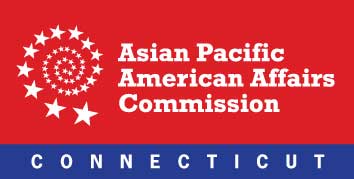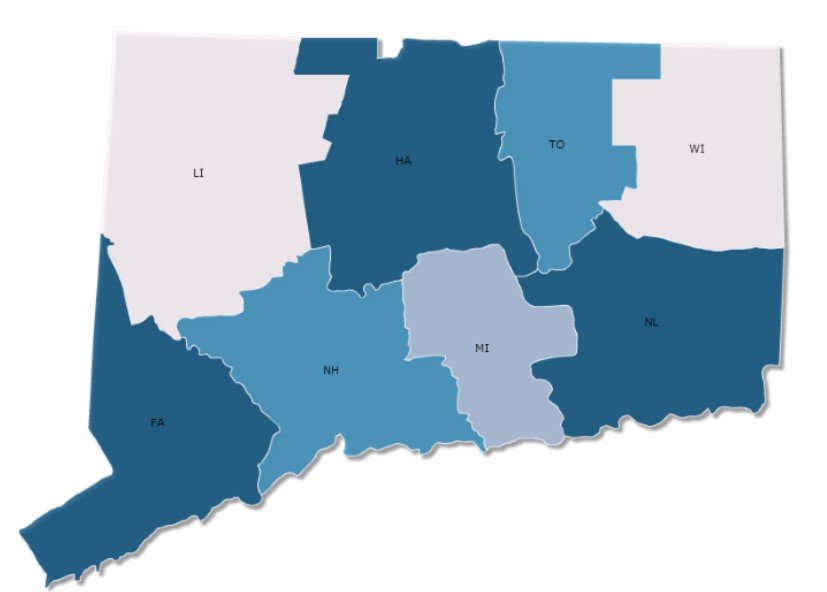National Voting Begins as Three Local Community Programs Try to Win $25,000 Grants
/Three Connecticut-based “causes” are among 200 across the nation currently vying for one of 40 grants of $25,000 to be awarded by State Farm, with voting now open to the public via Facebook. Regional Youth Adult Social Action Partnership in Bridgeport, Northwest CT YMCA: Winchester Youth Service Bureau, and Charter Oak Cultural Center in Hartford – BOTS Pots initiative are the three organizations whose programs are in the running for the grants. Individuals may vote up to 10 times each day from May 14 through June 3. The Top 40 winners will be announced on June 16.
The State Farm Neighborhood Assist began in 2012, and the annual program has three phases. First, Facebook users submit causes that they think deserve a $25,000 grant. Next, the State Farm® Youth Advisory Board narrows down the submissions to the top 200. Finally, Facebook users vote to select the top 40. Voting opened this week at https://apps.facebook.com/sf_neighbor_assist/ The Facebook site includes a “leaderboard” indicating the top ranked programs based on public voting.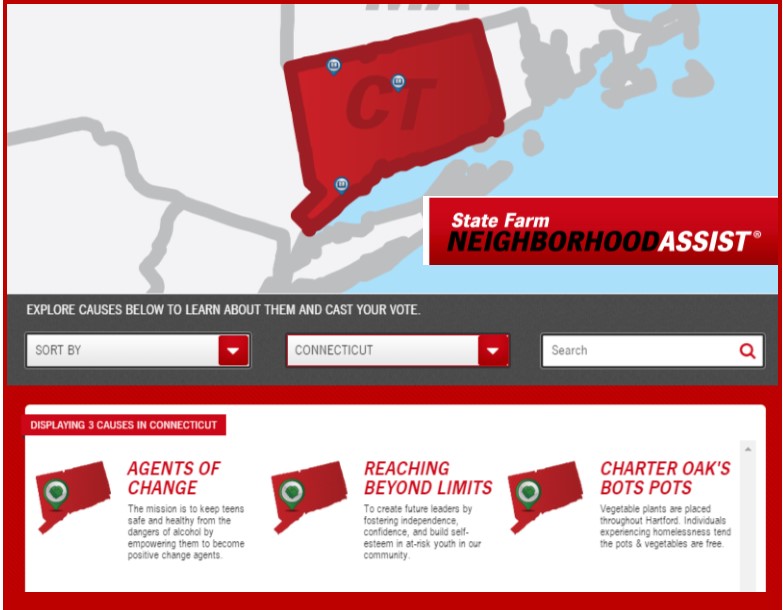
Details of the three Connecticut programs, as featured on the State Farm website:
Charter Oak Cultural Center in Hartford – BOTS Pots initiative
BOTS Pots-- named for Beat of the Street, Charter Oak Cultural Center’s “street” newspaper written by individuals experiencing homelessness and their allies-- places large potted organic vegetable plants throughout the City of Hartford. Individuals who are experiencing homelessness are hired and trained to tend the pots and the vegetables are provided for free to anyone in need, addressing hunger in Hartford. In addition, local artists volunteer to transform the pots into public art.
As far as we know, the program is the only one of its kind in the country, although the model has been sought out by other cities asking how they can bring it into their communities. BOTS Pots brings food, jobs and art to Hartford and provides much-needed work experience and a resume line item for individuals experiencing homelessness. Charter Oak Cultural Center hires, fully trains and compensates members of the homeless community to tend the pots, providing much-needed work experience and a resume line item. Because of the cycle of homelessness, members of this community often have a great deal of difficulty in obtaining job experience, another key job requirement for future work. The compensation they receive for their work tending BOTS Pots, in the form of gift cards, allows them to purchase food, clothing suitable for a job interview and other necessities to help them move to the next level of independence.
Regional Youth Adult Social Action Partnership in Bridgeport
The mission is to keep teens safe and healthy from the dangers of alcohol by empowering them to become positive change agents. Community need this cause addresses: Alcohol is the most commonly used drug among teens. Almost half of young people have gone to at least 1 drinking party during the year. Making alcohol less accessible is a prevention strategy that works! It is important that alcohol is kept out of the hands of people who are under 21. In Connecticut, on average youth pick up their first drink before their 12th birthday. Consider that- they take those first sips even before most begin middle school?! If youth pick up a drink before age 15, they are 4 times more likely to have alcohol dependency issues later in life. As teens get older, alcohol puts them at risk of other dangerous situations. By their senior year, 35 percent of high school students say they have been drink at least once in the past 2 weeks.
Northwest CT YMCA: Winchester Youth Service Bureau
The mission is to create future leaders by fostering independence, confidence, and build self-esteem in at-risk youth in our community. In Winchester, there is a need to support secondary school students. At this age, there is a significant rise in the amount of severe disciplinary offenses; this includes reports of substance use, assault, weapon, and inappropriate sexual behavior. The graduation rate is average. However due to the vast low SES population in the area, of the students who graduate, only 78% of students go onto higher education. This is 8.8% below the average and consequently the students are 11.6% more likely to go from high school to the work force. The hope is to create programs to support this age group; currently there are no positive youth programs that can guide them to having a positive adolescent experience. In this program, students will be able to build independence, confidence, and self-esteem through team-building, service projects, and positive social activities. Students will be given the knowledge to help them shape their own futures and foster their personal, academic, and social growth.





 Of a maximum five stars in the CEO ratings, Connecticut received 1.5 for Taxation and Regulations, 3.0 for Workforce Quality and 3.0 for Living Environment. The
Of a maximum five stars in the CEO ratings, Connecticut received 1.5 for Taxation and Regulations, 3.0 for Workforce Quality and 3.0 for Living Environment. The 

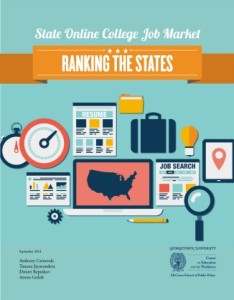
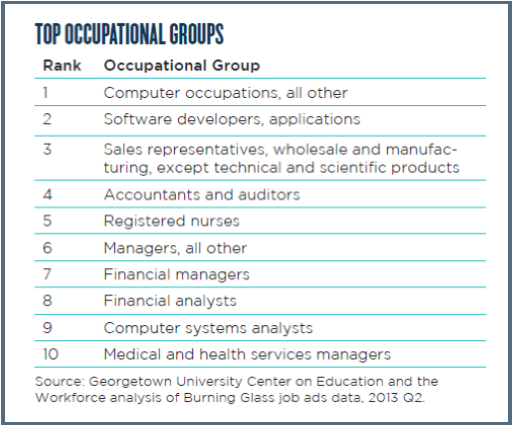 The top occupational groups reflected in the online job ads were 1) computer occupations, 2) software developers, 3) sales representatives,4) accountants and auditors, 5) registered nurses, 6) managers, 7) financial managers, 8) financial analysts, 9) computer system analysts and 10) medical and health services managers.
The top occupational groups reflected in the online job ads were 1) computer occupations, 2) software developers, 3) sales representatives,4) accountants and auditors, 5) registered nurses, 6) managers, 7) financial managers, 8) financial analysts, 9) computer system analysts and 10) medical and health services managers. The Georgetown University Center on Education and the Workplace is affiliated with the McCourt School of Public Policy. The study was done by Anthony Carnevale, Tamara Jayasundera, Dmitrirepnikov and Artem Gulish.
The Georgetown University Center on Education and the Workplace is affiliated with the McCourt School of Public Policy. The study was done by Anthony Carnevale, Tamara Jayasundera, Dmitrirepnikov and Artem Gulish.
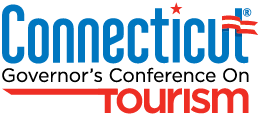 is to bring together professionals from every aspect of Connecticut’s tourism industry — including hotels, restaurants, casinos, tourist attractions, entertainment venues, historic sites, and cultural and arts institutions — to share best practices and learn from national tourism and travel experts. The statewide conference is managed by the DECD Connecticut Office of Tourism in partnership with the Connecticut Convention & Sports Bureau.
is to bring together professionals from every aspect of Connecticut’s tourism industry — including hotels, restaurants, casinos, tourist attractions, entertainment venues, historic sites, and cultural and arts institutions — to share best practices and learn from national tourism and travel experts. The statewide conference is managed by the DECD Connecticut Office of Tourism in partnership with the Connecticut Convention & Sports Bureau. igher education resources, a focus on New York City meeting planners, experts on capturing a share of the international tourist market, ways to maximize use of social media, Tourism Awards for outstanding industry leaders, and an array of workshops on areas including mobile marketing and group bus tours, as well as an exhibition of the most innovative products and services in the tourism sector, according to state officials. Cost for the conference is $99, for industry professionals.
igher education resources, a focus on New York City meeting planners, experts on capturing a share of the international tourist market, ways to maximize use of social media, Tourism Awards for outstanding industry leaders, and an array of workshops on areas including mobile marketing and group bus tours, as well as an exhibition of the most innovative products and services in the tourism sector, according to state officials. Cost for the conference is $99, for industry professionals.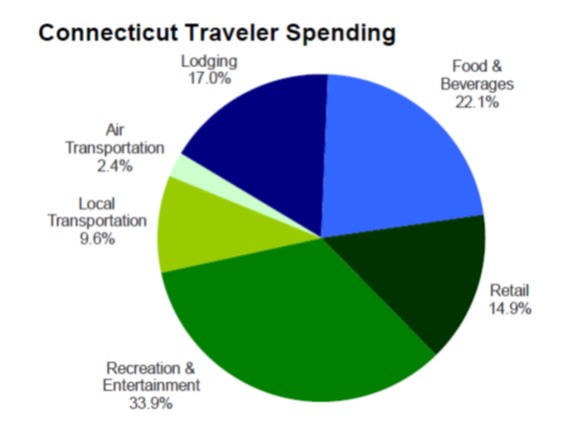 Traveler spending of $8.3 billion generated $14 billion in economic activity statewide in 2013, according to a study released recently by the office of Gov. Dannel P. Malloy. The study shows funds generated directly, through traveler spending, or indirectly, as employees, businesses and other beneficiaries turned around and paid for goods and services. Travelers to Connecticut destinations spent 3.0% more in 2013 than in 2012. Of all Connecticut travelers in 2013, nearly two-thirds were day travelers (66%). The tourism
sector supported more than 118,500 jobs in 2013, according to a recent state report.
Traveler spending of $8.3 billion generated $14 billion in economic activity statewide in 2013, according to a study released recently by the office of Gov. Dannel P. Malloy. The study shows funds generated directly, through traveler spending, or indirectly, as employees, businesses and other beneficiaries turned around and paid for goods and services. Travelers to Connecticut destinations spent 3.0% more in 2013 than in 2012. Of all Connecticut travelers in 2013, nearly two-thirds were day travelers (66%). The tourism
sector supported more than 118,500 jobs in 2013, according to a recent state report. irectors, a Greenwich-based live action production company, is producing a series of six on-air commercials for the Connecticut Office of Tourism, working in conjunction with Avon ad agency
irectors, a Greenwich-based live action production company, is producing a series of six on-air commercials for the Connecticut Office of Tourism, working in conjunction with Avon ad agency 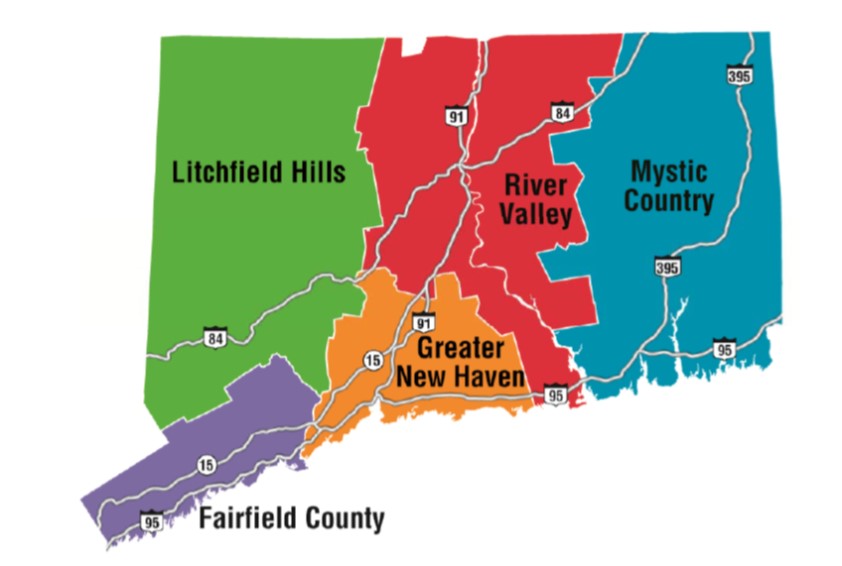



 Often referred to as a Tech Ethicist,
Often referred to as a Tech Ethicist, 

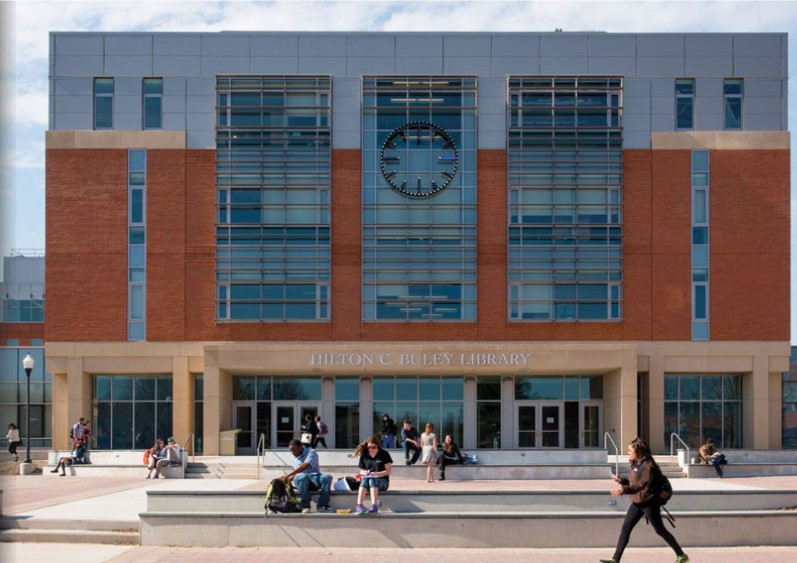 At Southern Connecticut State University in New Haven, students now have a first-rate, 21st century library in which to study, conduct research and meet with their friends and classmates, the university announced this week. A ribbon-cutting ceremony to mark the opening of the “new” Buley Library was held April 20. The event marked the completion of the $31 million project that renovated the original wing of the building. A 12,000-square-foot area that will serve as an atrium has been added to the older 98,000-square-foot wing as part of the project. When combined with the 135,000-square-foot addition that was completed in 2008, the library now encompasses 245,000 square feet.
At Southern Connecticut State University in New Haven, students now have a first-rate, 21st century library in which to study, conduct research and meet with their friends and classmates, the university announced this week. A ribbon-cutting ceremony to mark the opening of the “new” Buley Library was held April 20. The event marked the completion of the $31 million project that renovated the original wing of the building. A 12,000-square-foot area that will serve as an atrium has been added to the older 98,000-square-foot wing as part of the project. When combined with the 135,000-square-foot addition that was completed in 2008, the library now encompasses 245,000 square feet.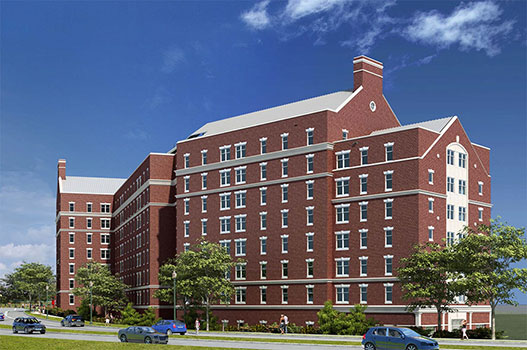 At Central Connecticut State University in New Britain, there is a Fall 2015 target date for completion of a new on-campus residence hall and food services dining facility. That will follow by just two years the opening of a major new classroom building on the CCSU campus. The four-story academic building houses classes and faculty offices for the sociology, history, anthropology, geography and political science departments, according to university officials. It includes 17 classrooms, five seminar rooms, seven labs and 71 offices for faculty and administrators. Now completing construction at the corner of Harold Lewis Drive and Ella Grasso Boulevard, the new $82.3 million, eight-story 220,000 square foot residence hall "will keep CCSU in the vanguard of higher education in operations and facilities," points out CCSU President Jack Miller, noting its ideal fit into the university's strategic plan for the recruitment and retention of new students.
At Central Connecticut State University in New Britain, there is a Fall 2015 target date for completion of a new on-campus residence hall and food services dining facility. That will follow by just two years the opening of a major new classroom building on the CCSU campus. The four-story academic building houses classes and faculty offices for the sociology, history, anthropology, geography and political science departments, according to university officials. It includes 17 classrooms, five seminar rooms, seven labs and 71 offices for faculty and administrators. Now completing construction at the corner of Harold Lewis Drive and Ella Grasso Boulevard, the new $82.3 million, eight-story 220,000 square foot residence hall "will keep CCSU in the vanguard of higher education in operations and facilities," points out CCSU President Jack Miller, noting its ideal fit into the university's strategic plan for the recruitment and retention of new students.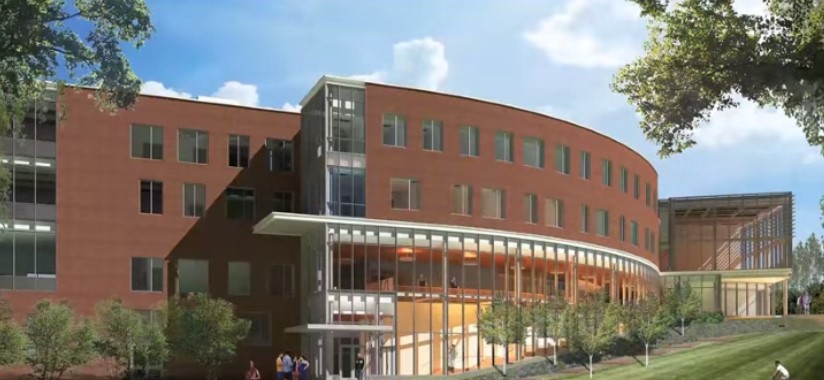 Opening this fall on the campus of Eastern Connecticut State University in Willimantic is a Fine Arts Instructional Center - a 118,000 square foot building that will contain three main performance venues; an auditorium; a procenium theater and a black box theater. In addition to the performance spaces there will be instructional labs and other spaces in support of the Performing Arts Department. There will be design studios for the Visual Arts Department including Printmaking, Sculpture, Painting and Drawing. The building will also have three general purpose classrooms and a gallery. Construction has been underway for the past two years.
Opening this fall on the campus of Eastern Connecticut State University in Willimantic is a Fine Arts Instructional Center - a 118,000 square foot building that will contain three main performance venues; an auditorium; a procenium theater and a black box theater. In addition to the performance spaces there will be instructional labs and other spaces in support of the Performing Arts Department. There will be design studios for the Visual Arts Department including Printmaking, Sculpture, Painting and Drawing. The building will also have three general purpose classrooms and a gallery. Construction has been underway for the past two years. The next major opening among the CSCU institutions will likely be a Science and Laboratory Building at Southern Connecticut, due later this year. Southern's ongoing expansion of its science programs will be greatly enhanced with the construction of a 103,608-square-foot, four-level academic and laboratory science building. Situated adjacent to Jennings Hall, the current home for the sciences, the new building will enhance the ongoing expansion of Southern’s science programs and the university’s capacity to educate more students in the STEM disciplines – science, technology, engineering and mathematics.
The next major opening among the CSCU institutions will likely be a Science and Laboratory Building at Southern Connecticut, due later this year. Southern's ongoing expansion of its science programs will be greatly enhanced with the construction of a 103,608-square-foot, four-level academic and laboratory science building. Situated adjacent to Jennings Hall, the current home for the sciences, the new building will enhance the ongoing expansion of Southern’s science programs and the university’s capacity to educate more students in the STEM disciplines – science, technology, engineering and mathematics.

 Gary Shapiro, president and CEO of CEA, said “The future of growth and economic prosperity in this country is most vibrant in places where policies and political climates serve to unleash the entrepreneurial spirit and can-do attitude that is part of our American DNA. Our hope is that states will use our Scorecard as a measurable guidepost to improve their policies supporting innovation.”
Gary Shapiro, president and CEO of CEA, said “The future of growth and economic prosperity in this country is most vibrant in places where policies and political climates serve to unleash the entrepreneurial spirit and can-do attitude that is part of our American DNA. Our hope is that states will use our Scorecard as a measurable guidepost to improve their policies supporting innovation.”